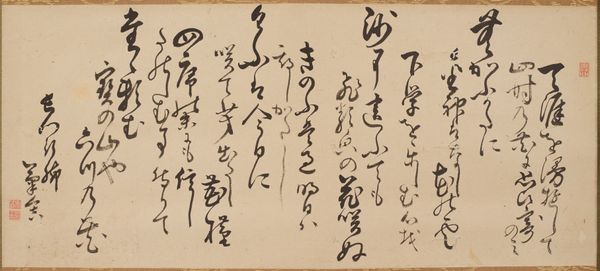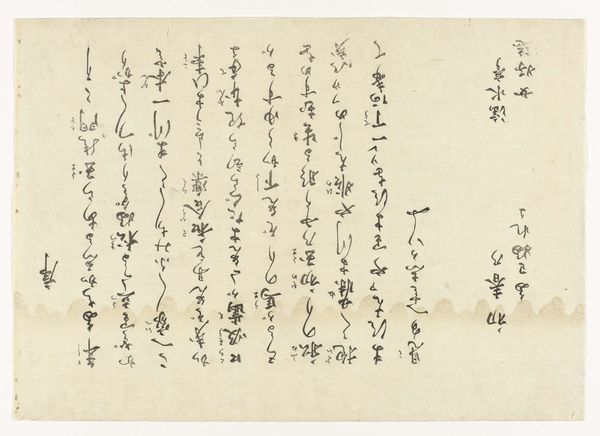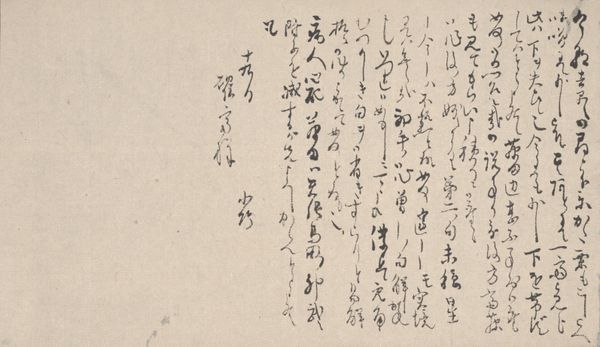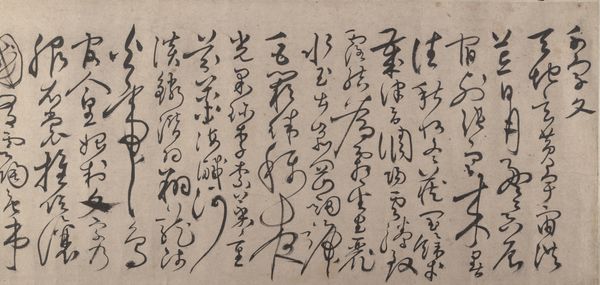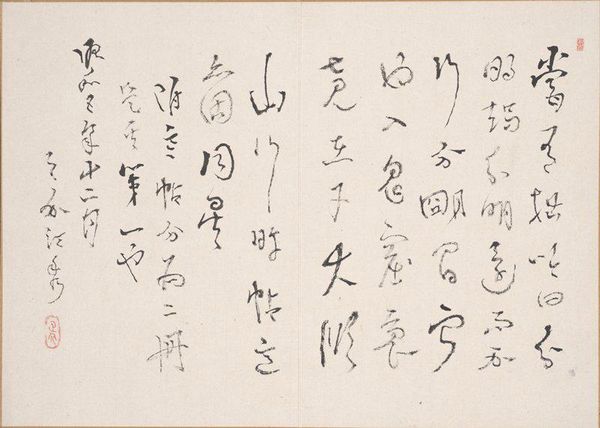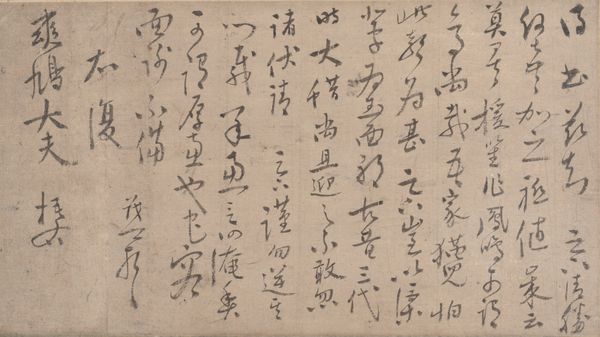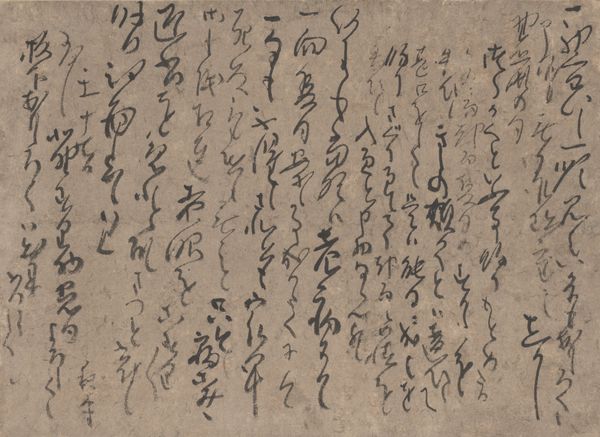
paper, ink-on-paper, ink
#
asian-art
#
paper
#
ink-on-paper
#
ink
#
calligraphy
Dimensions: 6 3/8 × 14 9/16 in. (16.19 × 36.99 cm) (sheet, letter)7 11/16 × 16 11/16 × 1/16 in. (19.53 × 42.39 × 0.16 cm) (mount)
Copyright: Public Domain
Curator: This is a calligraphy piece entitled "Letter to Kyūchō," created around the 19th century by Hoashi Kyōdō. The artwork resides here at the Minneapolis Institute of Art and showcases elegant calligraphy in ink on paper. Editor: Immediately, the texture and form suggest a sense of both controlled discipline and spontaneity. There’s a delicate balance between the density of the ink and the negative space of the paper that projects calm thoughtfulness. Curator: The brushstrokes, while appearing spontaneous, reveal a structured execution reflective of dedicated practice. Observe the thickness variation and subtle pressure changes that add dynamic life to the characters. We are able to discern from those calligraphic shapes their structure, the movement of their making. Editor: Precisely, and one starts wondering about the type of brush that was employed, the crafting of the paper, and how these material elements influenced the flow. It prompts me to question the type of inks available at the time. The craft itself becomes a focal point of investigation. How do we imagine its original audience and where was it hung, stored, or used. Curator: Good points, but I believe it's more pertinent to consider the work’s composition; the organization of marks to signify meaning is fundamental. A keen analysis reveals it is through the artistic employment of calligraphic practice and negative space that Kyōdō creates harmony within the structural components of the whole artwork. Editor: Still, I argue that the tactile and temporal contexts inform that very reading. The production and cultural positioning of calligraphic work are also very relevant when discussing that artistic arrangement you just pinpointed. We cannot separate that form from the way that form becomes situated. Curator: A valid viewpoint. Both formal examination and considerations of production practices undoubtedly add depth to one’s experience with the artwork. Editor: Absolutely! Understanding art relies on considering various perspectives to uncover rich, contextual meanings embedded within art objects and practices.
Comments
No comments
Be the first to comment and join the conversation on the ultimate creative platform.

